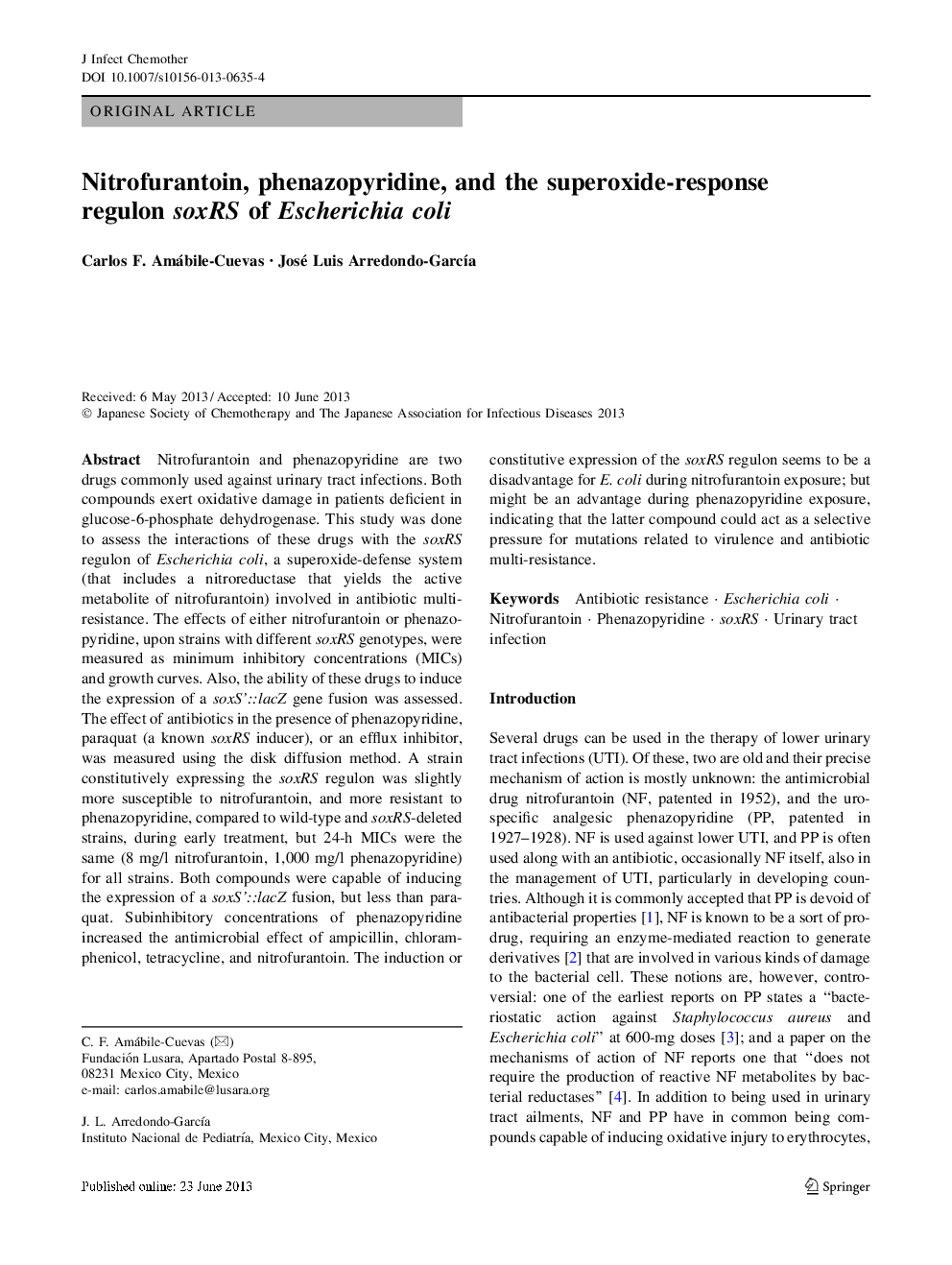| Article ID | Journal | Published Year | Pages | File Type |
|---|---|---|---|---|
| 6123698 | Journal of Infection and Chemotherapy | 2013 | 6 Pages |
Abstract
Nitrofurantoin and phenazopyridine are two drugs commonly used against urinary tract infections. Both compounds exert oxidative damage in patients deficient in glucose-6-phosphate dehydrogenase. This study was done to assess the interactions of these drugs with the soxRS regulon of Escherichia coli, a superoxide-defense system (that includes a nitroreductase that yields the active metabolite of nitrofurantoin) involved in antibiotic multi-resistance. The effects of either nitrofurantoin or phenazopyridine, upon strains with different soxRS genotypes, were measured as minimum inhibitory concentrations (MICs) and growth curves. Also, the ability of these drugs to induce the expression of a soxS'::lacZ gene fusion was assessed. The effect of antibiotics in the presence of phenazopyridine, paraquat (a known soxRS inducer), or an efflux inhibitor, was measured using the disk diffusion method. A strain constitutively expressing the soxRS regulon was slightly more susceptible to nitrofurantoin, and more resistant to phenazopyridine, compared to wild-type and soxRS-deleted strains, during early treatment, but 24-h MICs were the same (8Â mg/l nitrofurantoin, 1,000Â mg/l phenazopyridine) for all strains. Both compounds were capable of inducing the expression of a soxS'::lacZ fusion, but less than paraquat. Subinhibitory concentrations of phenazopyridine increased the antimicrobial effect of ampicillin, chloramphenicol, tetracycline, and nitrofurantoin. The induction or constitutive expression of the soxRS regulon seems to be a disadvantage for E. coli during nitrofurantoin exposure; but might be an advantage during phenazopyridine exposure, indicating that the latter compound could act as a selective pressure for mutations related to virulence and antibiotic multi-resistance.
Keywords
Related Topics
Life Sciences
Immunology and Microbiology
Applied Microbiology and Biotechnology
Authors
Carlos F. Amábile-Cuevas, Arredondo-GarcÃa José Luis,
